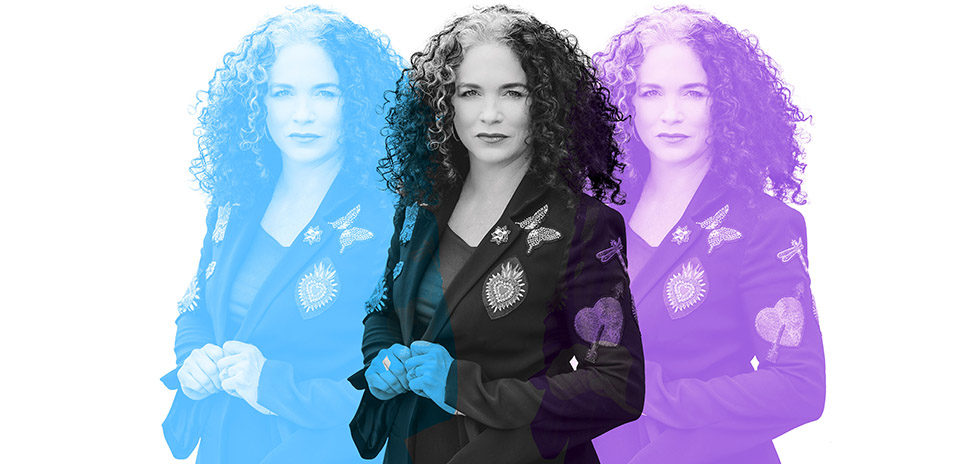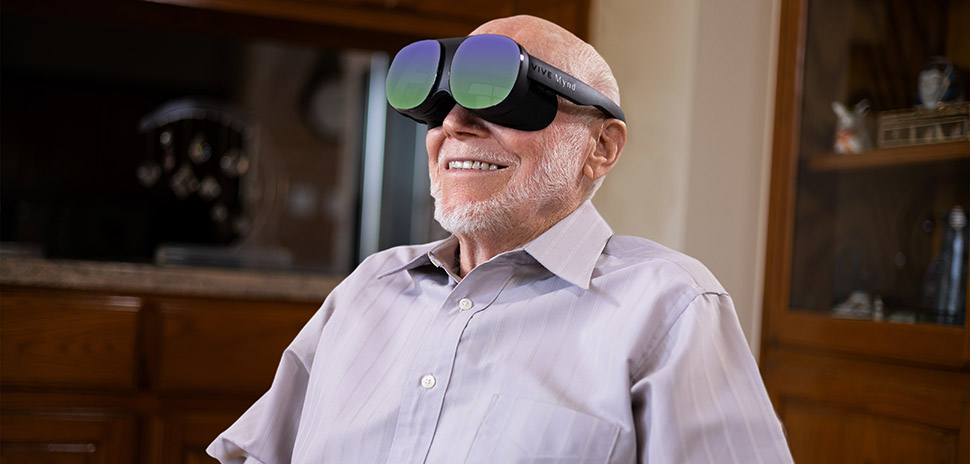Each year, more than 800,000 people in the United States suffer a stroke or other traumatic brain injury. Thousands more are diagnosed with spinal cord injuries and neurodegenerative diseases like Parkinson’s and Huntington’s.
So, in 2017, 29-year-old Veena Somareddy co-launched Neuro Rehab VR to create engaging, fun, motivating, and customized VR/AR exercises that strengthen and form new neural pathways in the brain.
Somareddy studied computer science and game design at UTD and held internships in Silicon Valley before she began developing virtual and augmented reality games and experiences for medical training and simulation. She explains Neuro Rehab VR as a developer of AR/VR physical and cognitive therapy exercises for neurological rehabilitation. She and her team do this by applying the principles of neuroplasticity using AR/VR technology.
Meet Veena Somareddy, the CTO, president, and co-founder of Neuro Rehab VR.
How is your product or business different?
Physical therapists and the patient both provide input for our products. They are also backed by extensive research and clinical trials. We iterate constantly from the feedback we receive, and this process helps us create products that can truly help our patients in their journey towards faster therapy results and recovery to the best possible measure.
What problem are you solving with your product or business?
Each year more than 800,000 people in the United States suffer from a stroke or a Traumatic Brain Injury, or TBI. Thousands more are diagnosed with spinal cord injuries and neurodegenerative diseases, including Parkinson’s, and Huntington’s disease, leading to long-term disability. Within minutes, a person leading a healthy independent life may end up needing 24/7 care and support. There is no cure for brain damage, but they can get better with extensive physical and cognitive training, which can help strengthen and form new neural pathways in the brain. This is when the healthy parts of the brain can take over for the damaged areas. But physical therapy is expensive and clinics are far and apart, making transportation a problem. On top of that, most therapy sessions are boring and repetitive.
On the financial side, insurance only pays for a certain number of physical and cognitive therapy. If the patient is not making progress, the payments are cut off. This leads to a patient prematurely giving up and never fully recovering to their full potential.
Solution: We created engaging, fun, motivating, and customized VR/AR therapy exercises tailored to each patient’s need based on their diagnosis. We brought down the costs of therapy, and made it more efficient and within the reach of anyone who needs it.
Our training modules help the patient work on their cognitive as well as physical therapy at the same time, instead of doing each in isolation. By providing functional goals and feedback with real-time progress reports we aim to achieve better and faster recovery.
Is there a real-world example you can give?
We have various training modules for different parts of the body like upper, lower, core and gait training. We have observed that patients cardiopulmonary efficiency is improving because they are able to stay in therapy for longer sessions with fewer breaks in between. They are motivated and engaged during therapy sessions leading to improved coordination, functional independence, and mobility.
Patients immersed in the virtual 3D environment tend to forget about their limitations in the real world, since they are not influenced by the bias of their diagnosis. For example, patients with limited range of motion in their limbs are able to extend their arms further than they usually do because in a VR environment they are focused on the current exercise and its goals.
READ NEXT Medical VR Startup Takes First at UTD Big Idea Competition
What round of funding are you in?
We are bootstrapped and funded by co-founder Bruce Conti.
How much money have you raised thus far?
$15,000: Pitch competition
$224,893: Phase I NSF Grant funding
Why did you launch in Dallas-Fort Worth?
Although Silicon Valley seems to be the place to start a VR/AR company, the growing entrepreneurial community, the people, and the resources in DFW helped me make the decision to stay and start a company here. It’s a great location for a health-tech company with amazing medical institutions like UNTHSC, UT Southwestern, and also medical centers such as Baylor Scott & White, Methodist Health, and others. That’s along with hundreds of smaller physical rehabilitation and therapy clinics.
What are your real responsibilities day to day?
My day-to-day includes supervising the research and product development of our physical therapy training exercises, as well as conducting pilots with patients and therapists to receive feedback. And also working on the overall company strategy and vision.
How has your previous life experience or employment played a role in your success/product company?
My classes at UT Dallas, along with my internships at companies in Silicon Valley and employment have helped me hone my technical skills. I’m an avid reader—anything ranging from neuroscience to startup business that will help me understand my business better is on my reading list. The different perspectives from business books and the technical knowledge from science books help me apply the interdisciplinary skills I acquire to the product and strategy of the company.
What do you like about working in tech in Dallas?
Dallas-Fort Worth is a city with big ambitions, especially in tech. This is evident in the number of resources, mentors and the events to educate and nurture entrepreneurs in the community. The technical talent in the area is amazing with schools like UT Dallas, which is a great place to recruit future employees for a start-up.
Your first breakthrough moment?
The first VR application I developed for physical therapy did not work for the patients. It was because I iterated through its development by testing the app myself. As an able-bodied person, I’m not impaired by the same limitations as someone who has suffered a stroke or spinal cord injury. That is why it did not work.
Since then, the feedback we receive from the patients and therapists has been the driving force behind all the technology and training exercises we create.
Your latest breakthrough moment?
I’ve had little breakthrough moments at various times during my startup journey.
READ NEXT 26 North Texas Innovators Who Are The Future Today
What have you tried and failed at?
All the companies I tried to start before Neuro Rehab VR. Even though I’m longer working on them, I’ve learned valuable lessons such as the importance of finding the right founders, understanding the various phases a startup goes through, and learning how to be consistent with structured milestones to make true progress in a startup.
What’s on the horizon for you and your company?
For 2019, we are creating new product lines for various therapy modalities and also excited about sharing the research and knowledge we have gained so far while working with patients and therapists to create this new novel approach to physical therapy. We are also working on various partnerships with universities and medical institutions to bring our technology to their patients.
Who’s inspiring you right now?
Elon Musk as always. But right now, Arlan Hamilton. I’m a fan of her and her tweets because she says it like it is, drawing attention to the microaggressions female and minority entrepreneurs face during their startup journey. The work she is doing is inspiring and motivating to keep going.
Tell us about a recent breakthrough or some cool tech that’s underway that you’re excited about.
A breakthrough that’s here: AI hit a milestone recently with the quest for Artificial General Intelligence (AGI), called Impala architecture. A single algorithm that is capable of learning 30 different challenging tasks requiring various aspects of learning, memory, and navigation.
A breakthrough that’s not here yet is the combination of AI, genetic engineering, and a person’s health data, which doctors could use to prevent, diagnose, or treat diseases early. If a patient has already suffered a stroke or brain injury, a way to create the best recovery plan according to each individual patient’s diagnosis and historical medical data. It’s not a “breakthrough” yet, but it’s underway.
I’m still waiting for the day when I could upload my brain to the cloud, which seems to be much further away from fruition.
What advice do you have for someone who is trying to break through in tech right now?
First, when thinking about starting a company, think of ideas that you are passionate about and are okay with working on for the long haul, like the next ten years.
Second, learn about emerging technologies that have the potential to change the way we live or do business fundamentally. For example, AI and VR/AR are set to disrupt the healthcare space in the next few years in a big way. It is still early days but advances in AI, VR/AR, and data analytics drawn from everywhere from Fitbits to your prescription history, the future of medicine has an emphasis on value-based and customized care for the patient. If you can see these patterns — in any industry — the opportunities to break into a particularly tech industry become clear.
This Q+A was used for a series in Dallas Innovates 2019—The Magazine.
Dallas Innovates 2019—The Magazine highlighted 26 North Texas innovators who are the future today. These men and women are renegades, visionaries, and people who don’t take no for an answer. And they are all forging the future of tech that has the potential to change the world. Throughout the next month, we will be sharing individual interviews with our innovators as part of the extended magazine content on dallasinnovates.com.
Read it online
Dallas Innovates 2019—The Magazine explores the region as a rising tech hub that will shape the future of innovation. The theme of our second annual print publication, “A Breakout Moment,” explores why now is the time for the region to grab its place in the tech universe.
![]()
Get on the list.
Dallas Innovates, every day.
Sign up to keep your eye on what’s new and next in Dallas-Fort Worth, every day.

































